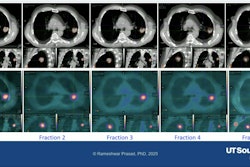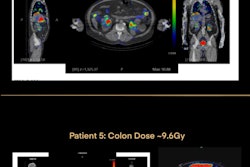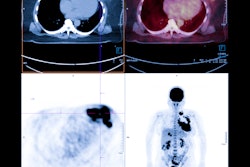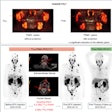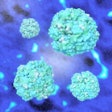Radiation safety should be considered when adding F-18 myocardial perfusion imaging (F-18 MPI) to the radiation oncology department, according to a talk given June 24 at the Society of Nuclear Medicine and Molecular Imaging (SNMMI) annual meeting.
James Case, PhD, from the University of Missouri, Kansas City, presented several radiation safety considerations for technologists beginning to use F-18 MPI in PET imaging procedures, including hot lab redesigns and added shielding.
“You may have a lot of things already in place,” Case said. “You have good PET software or have good cardiac-specific training. You may need to look at your radioactive materials license. And your shielding is already probably in pretty good shape.”
Some radiation oncologists may be looking to replace their rubidium (Rb-82) protocols with Flurpiridaz in cardiac PET programs. While the latter has a higher dosage, it has a lower radiation dose compared to SPECT imaging.
Case said that departments may need to think about how spaces are used strategically to minimize the amount of lead and renovations needed to successfully accommodate F-18 MPI. However, he added that despite discussions on using stress-only protocols, same-day protocols, and two-day protocols, department leaders should not “get creative” and instead use standard protocols to ensure patient safety and exam success.
"A year from now, when we start seeing results … [from] these alternative protocols, yeah, let’s look at some of this,” Case said. “[But] at this point in time, don’t look at modifying the injector dosage, weight-based dosing, and all of that. Stick to the package insert and you’ll be OK.”
From the patient’s standpoint, radiation oncologists should never compromise image quality for reducing patient dosage, Case added.
“Let’s think about this. The number one killer of people in the world today is not diagnostic radiation,” he said. “Nobody is mowing their lawn today and going to have chest pain as a result of diagnostic radiation. The fact is we’re trying to detect and prevent the number one killer of human beings [-- cancer].”
Case added that other considerations for patients include all sources of radiation, individual risk, avoiding diagnostic CT for patients with a known CAD positioning, best available reconstruction techniques, and awareness of radiation risks to the public and staff.
Case said the following should also be considered when departments look into making the switch to F-18 MPI:
Increased radiation risks may be offset by the clinical benefits, especially for high-risk patients.
Hot labs may need significant redesigns, such as expanding the lab space to include shipping, adding a dose calibrator, and including space for the decaying of 511 keV products.
Staff protection should be considered for exercise testing and patient time in the laboratory.
More shielding may be needed, but departments should consider strategies for changes in space use and workflows.
“Oftentimes, you can avoid the need for significant renovation depending on how you use the space without having to add lead,” Case said.
Case said this information should arm practitioners with the knowledge needed to answer potential questions asked by health physicists when considering switching from Rb-82 to F-18 MPI.
“[This is so] at the end of that conversation, your health physicist will be like, ‘Yes, let’s do this,’ ” he added.





